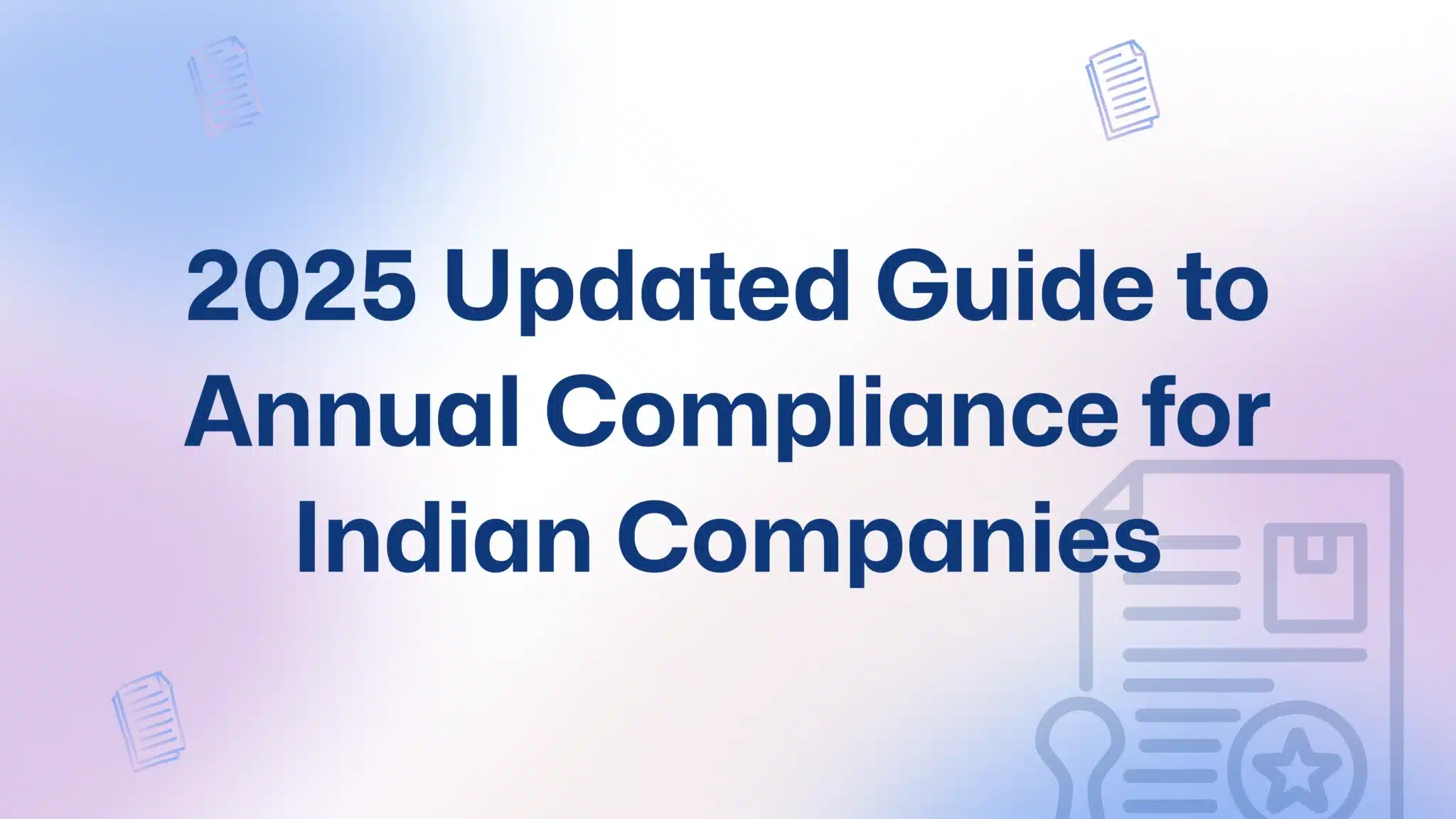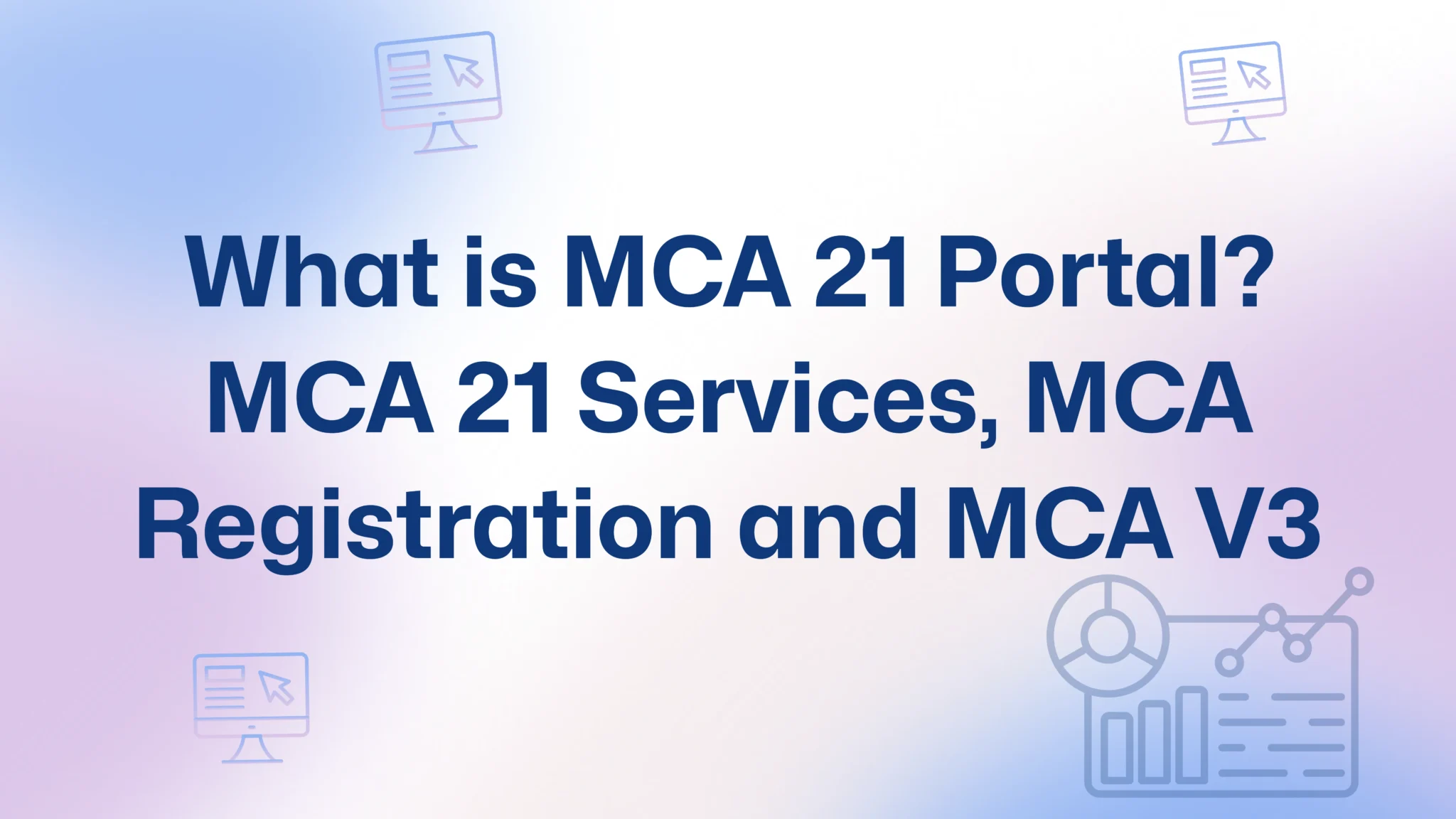Goods and Services Tax (GST) remains important for doing business in India. Company that surpass turnover limits, sells across states, or operates online must register for GST. In 2025, the government introduced new GST guidelines to make registration faster and clearer. These updates aim to reduce document requests, bring uniformity across states, and speed up approvals for genuine applicants. The idea is to simplify compliance while tightening checks against fake registrations.
Here’s a clear look at what’s changed, which documents you’ll need, and how to complete your GST registration smoothly, as advised by our experts.
What You’ll Find in This Blog
- New GST Registration Guidelines 2025 – What You Need to Know
- Why GST Registration is Important
- Who Needs GST Registration in 2025
- What’s New in 2025
- Documents Required for GST Registration
- GST Registration Fees
- Step-by-Step Online GST Registration Process
- Common Mistakes to Avoid
- Common Pitfalls & Tips to Avoid Rejection
- After You’re Registered
- Tips to Make Registration Easier
- After Registration: What You Must Do Next
Why GST Registration is Important
GST registration in India is not just another compliance practice. It allows business to collect tax, claim credit input, and operate as legitimate entity. Whether you’re beginner or expanding, a valid GSTIN gives your business structure and credibility.
Goods and Services Tax Identification Number (GSTIN) ties together all your invoices, filings, and tax records. Without it, you can’t claim input tax credit, and many larger clients will avoid working with you.
Skipping registration isn’t just risky it restricts growth, credibility, and opportunities.
Who Needs GST Registration in 2025
If your business fits into certain categories, registration is mandatory:
- Businesses must register for GST when their annual turnover crosses the following limits:
For goods: ₹40 lakh in normal states and ₹20 lakh in special category states (such as the North-Eastern and hill states).
For services: ₹20 lakh in normal states and ₹10 lakh in special category states. - Anyone involved in interstate trade(sell across states).
- E-commerce sellers on platforms like Amazon or Flipkart (many platforms insist on GST).
- Casual or non-resident suppliers.
- Input service distributors, agents, or TDS/TCS deductors under GST.
What’s New in 2025
The GST Council introduced new rules to simplify registration and reduce fraud. Key points include:
1. Faster Approval for Genuine Businesses- Applications that pass document checks now get automatic approval within three working days.
2. Fewer Document Requirements- One valid address proof is enough officers can’t demand unnecessary papers anymore.
3. Better Fraud Detection- Aadhaar-based verification and selective physical checks now prevent fake or duplicate registrations.
Documents Required for GST Registration
Gather your paperwork before you start the online application. Missing or mismatched details can hold up approval.
For Individuals / Proprietorships
- PAN and Aadhaar of owner
- Photograph
- Business address proof (electricity bill, rent agreement, or NOC from the owner)
- Bank statement or cancelled cheque(showing your name, account number, and IFSC code)
For Partnership Firms / LLPs
- PAN of all partners
- Partnership deed or incorporation certificate
- Business address proof
- Signed authorization letter naming one partner as the authorized signatory
- Bank account proof (such as a cancelled cheque or statement)
For Companies
- Company PAN
- Certificate of Incorporation, MOA, AOA
- PAN and Aadhaar of directors
- Registered office address proof
- Board resolution for signatory
- Bank statement or cheque
Always ensure names, addresses, and contact details are similar in all documents.
Documents Common to All:
Every applicant must upload clear digital copies of:
- Proof of business premises: A recent utility bill, property tax receipt, or lease document. If the property is shared or family-owned, include a consent letter and the owner’s ID.
- Identity and address proof: PAN is mandatory. For address verification, use Aadhaar, voter ID, driving licence, or passport.
- Bank details: A cancelled cheque, statement, or passbook page showing key account information.
- Authorization or board resolution: Board Resolution authorizing a director or another individual to act on behalf of the company for GST-related matters.
- Board Resolution authorizing a director or another individual to act on behalf of the company for GST-related matters.
The new system focuses on simplicity, no physical verification or extra document requests unless there’s a clear reason. Just make sure every file is readable and consistent across forms. Getting these details right upfront will make your GST registration faster and far less stressful.
GST Registration Fees
There’s no government fee for GST registration through the official portal — it’s completely free. Though many businesses hire professionals (chartered accountants, GST consultants, online service providers) to help with the paperwork, uploading, follow-ups. Those professionals charge fees, which vary.
Step-by-Step Online GST Registration Process
Step 1: Start Application
- Visit gst.gov.in
- Go to Services → Registration → New Registration
- Select “Taxpayer,” enter PAN, business name, email, and phone number
- Verify OTPs and receive your Temporary Reference Number (TRN)
Step 2: Fill Details
- Log in using your TRN(Temporary Reference Number)
- Provide business, promoter, and bank details
- Upload all required documents
- Verify via DSC (Digital Signature Certificate)or Aadhaar OTP
- Submit and note your Application Reference Number (ARN)
Step 3: Verification and Approval
- The GST officer reviews your application
- Straightforward cases get approved in about three days
- If clarification is needed, respond within seven days
- Once approved, your GSTIN and registration certificate arrive by email
Display your certificate prominently at your place of business.
Common Mistakes to Avoid
Avoid these issues that often delay approval:
- PAN(Permanent Account Number) or business name mismatch
- Unclear or invalid address proof
- Missing NOC for rented space
- Expired documents
- Ignoring officer queries
- Skipping Aadhaar or DSC verification
Accuracy and prompt response are key to smooth approval.
Common pitfalls & tips to avoid rejection
Even with new rules, things can go wrong. Here are common mistakes and how to avoid them:
- Blurry or unclear scans — make sure PDFs or JPGs are legible.
- Mismatch in names or addresses — compare exactly across PAN, Aadhaar, business name.
- Rent agreement not registered or lacking owner consent (when needed).
- Missing or improper board resolution or authorization letter.
- Uploading wrong documents just because some officers previously demanded extras — under new guidelines, they aren’t allowed to demand outside list.
- Delaying submission after TRN (you have 15 days).
- Not maintaining records or back-ups — if you need to respond to queries, keep a good file system.
After You’re Registered
Once you have your GSTIN:
- Display your registration certificate at your premises.
- Include your GSTIN on all invoices.
- File returns on time monthly, quarterly, or annually.
- Maintain sales and purchase records for claiming input tax credit.
Consistent compliance protects your business reputation and avoids penalties.
Tips to Make Registration Easier
- Use Aadhaar authentication it cuts approval time drastically.
- Keep address proofs updated and signed if you rent the space.
- Only apply through the official GST portal — avoid shortcuts or agents.
- Save your TRN and ARN for tracking or future updates.
- As suggested by the Expert in FinGuru, always double-check document consistency — it’s the single biggest factor in avoiding rejections.
After registration: what you must do next
Once you get your GSTIN and registration certificate, here’s what you must immediately act on:
- Use the GSTIN on invoices — every invoice you issue must show it.
- File regular GST returns (GSTR-1, GSTR-3B or applicable ones under the scheme).
- Maintain books and documents to support your declared sales, purchases, and taxes paid.
- Claim input tax credit (ITC) properly — only on invoices that satisfy conditions.
- Stay alert to audits, notices, or verification visits — having proper documentation matters.
- If you have branch offices or multiple places, ensure your registration covers all within state(s).
Conclusion
The 2025 GST registration guidelines have simplified compliance like than before. If your documents are ready and verified, approval can happen in just a few days.
Prepare your paperwork early, follow the steps carefully, and keep details consistent across documents. Your GSTIN isn’t just a tax ID — it’s proof your business is legitimate, compliant, and growth-ready.
There’s no reason to wait. Register online today and future-proof your business for the long run with Finguru India.













